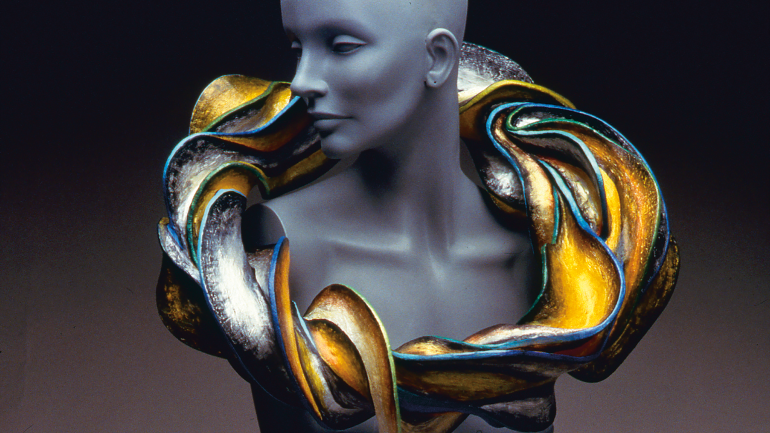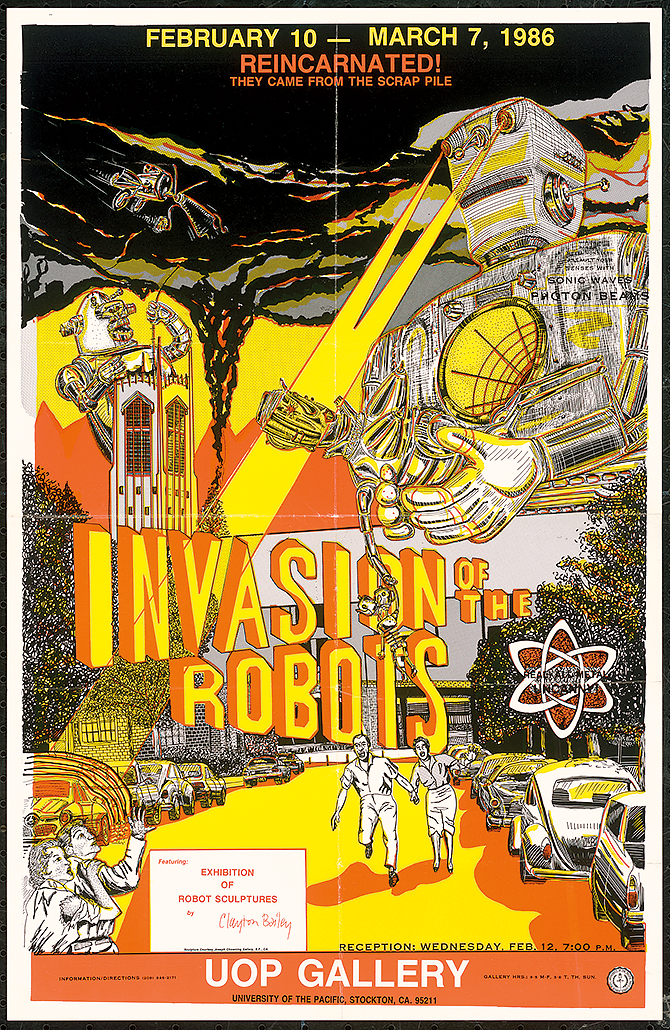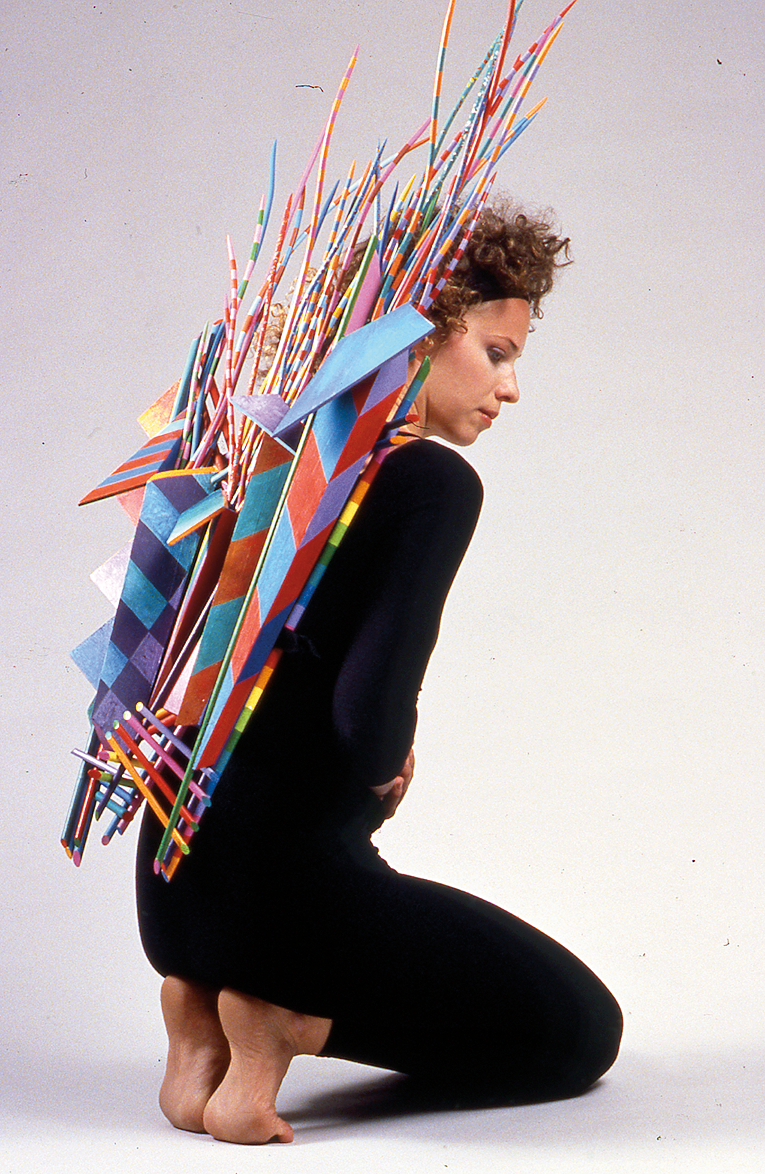Wild at Heart
Wild at Heart
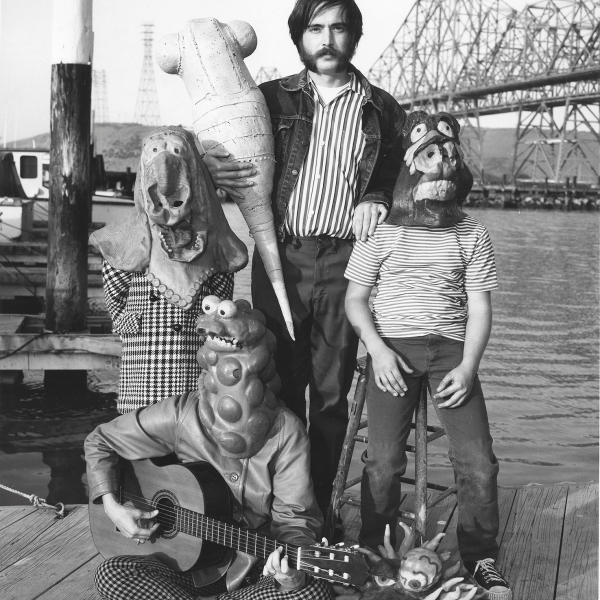
In a photo for the 1969 Objects: USA exhibition, Clayton Bailey (center) holds a polyurethane grub while his family Robin (left), Kurt (right), and Betty (bottom) wear Chicken Mutant and Evil Eye monster masks near their home in Crockett, California.
Clayton Bailey (1939–2020)
As a leader in the ceramics arm of the funk art movement, Clayton Bailey created sculptures primarily of ceramic, latex, and metal and infused them with humor and a bit of the grotesque. His work was an amalgam of art, science, entertainment, and invention. As an instructor at what was then known as Whitewater University in Wisconsin, Bailey noted that beauty “is an attribute of the familiar and the comfortable. The artist . . . should seek to discover the new and unusual, and should not strive for beauty,” according to the artist’s website.
Bailey was continually innovating new techniques for working with material and ways to incorporate elements such as electricity and kinetic movement into his sculptures. He even created an alter ego in the guise of Dr. George Gladstone, an artist/scientist who lectured on discoveries of fossilized remains (usually ceramic) of creatures from the “Pre-Credulous Era.” Gladstone’s collection of artifacts led to the creation of the Wonders of the World Museum, initially located in Bailey’s backyard and later in a storefront space in Port Costa, California.
Marjorie Schick (1941–2017)
Marjorie Schick was a pioneering force in avant-garde jewelry making, pushing body adornment into the realm of sculpture. She emerged as a jewelry artist in the 1960s when her contemporaries in the community of “new jewelers” were rejecting traditional materials and techniques. Although trained in the craft of metalsmithing, Schick was drawn to nontraditional media, from fiber and papier-mâché to the wooden dowels of her iconic dowel stick series.
Throughout her body of work, Schick explored the relationship between sculptural form and the human body. While her jewelry work broke free of the constraints of the body into surrounding space, her sculptures were grounded in the human form. Schick used scale, bold color, and unconventional forms to provoke. Soft-spoken and mild-mannered, she took delight in referring to herself as “quietly rebellious.”
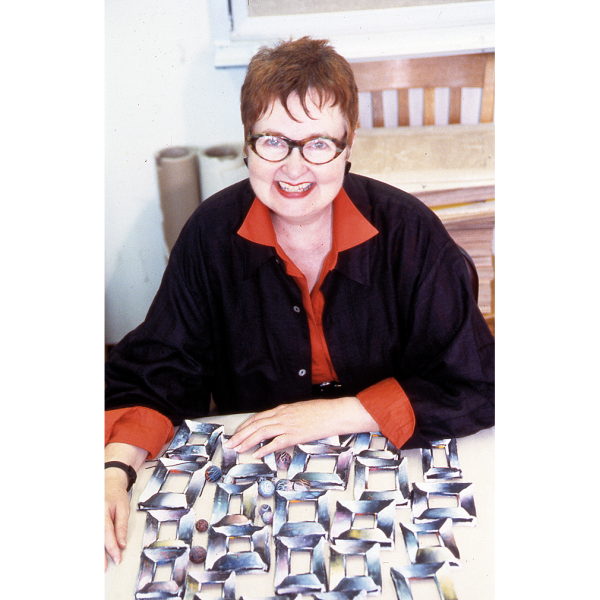
Portrait of the artist, an avant-garde jewelry maker who rejected traditional materials and techniques.
About the ACC Library
The American Craft Council Library & Archives in Minneapolis contains the country’s most comprehensive archive of contemporary American craft history, with more than 20,000 print publications, files on nearly 4,000 craft artists, four major archival collections, and a robust digital collection. To explore the ACC Digital Archives, visit digital.craftcouncil.org. Sign up for librarian Beth Goodrich’s quarterly newsletter at craftcouncil.org/CraftyLibrarian. For more information about joining the Friends of the ACC Library & Archives, contact Judy Hawkinson, ACC’s associate executive director, at [email protected] or 651-434-3951.
